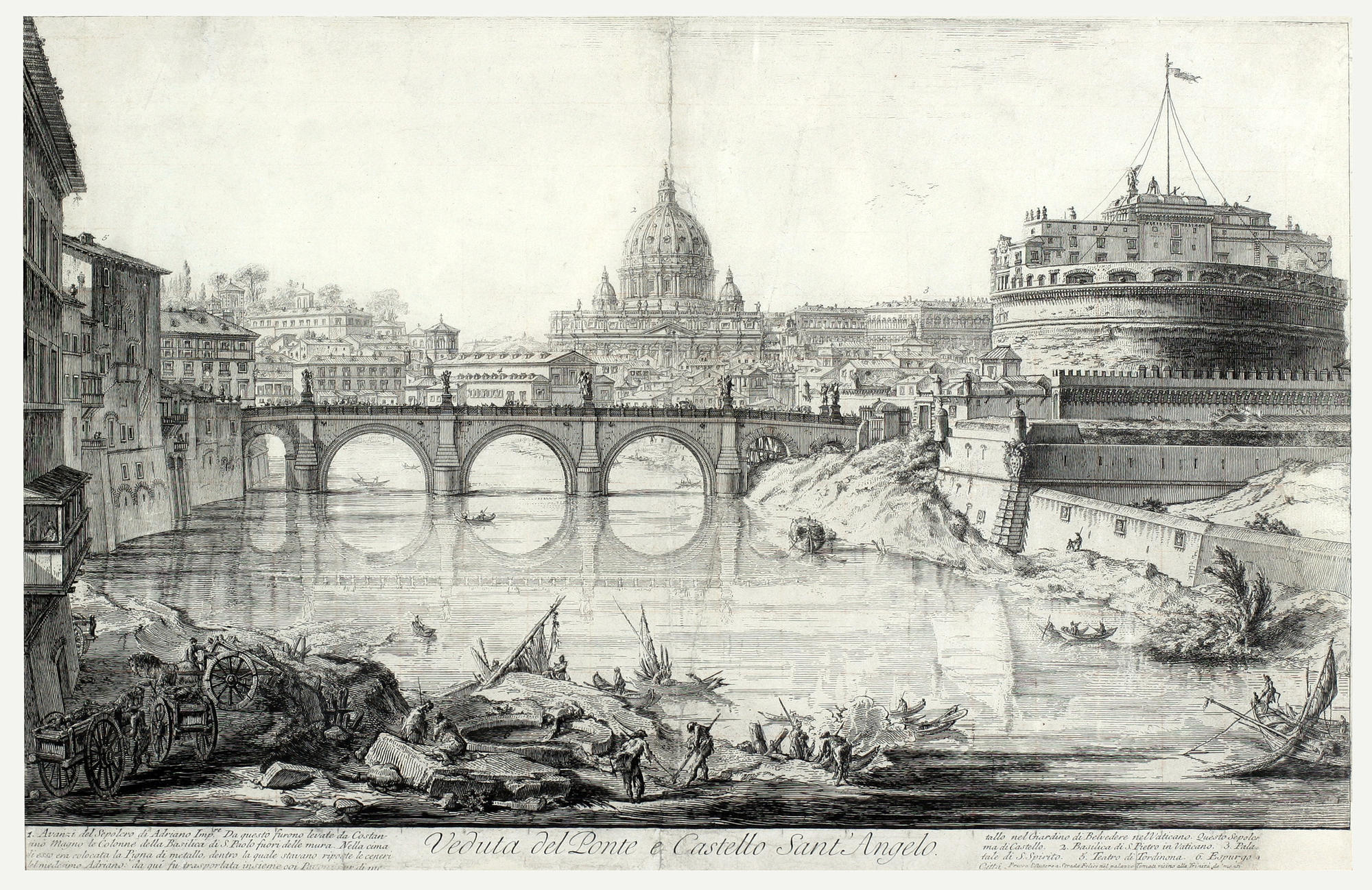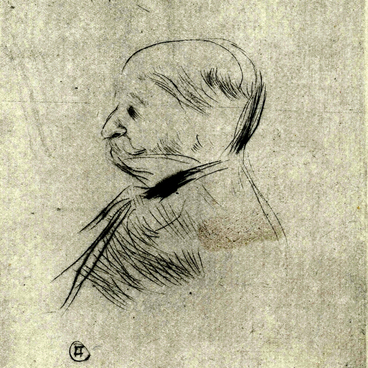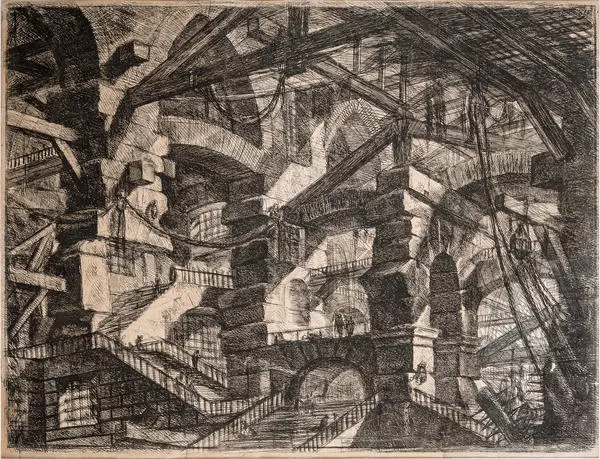“View of the St. Peter”s Cathedral, bridge and castle of Saint Angel in Rome’ is an engraving from the monumental series ‘Views of Rome’ which the craftsman Giovanni Piranesi resumed to replenish during 30 years – since late 1740 till 1778. It totals 137 sheets. The imprints from the plates of Piranesi were printed during his lifetime and following his death, up to mid XX century.
View of the St. Peter’s Cathedral
Время создания
XVIII century
Размер
37,9x58,5 cm
37,9x58,5 cm
37,9x58,5 cm
Техника
paper, etching, chisel, fifth condition
Коллекция
2
Открыть в приложении#3
Giovanni Battista Piranesi
View of the St. Peter’s Cathedral
#5
#2
The architect and master of veduta (city architectural views), Giovanni Piranesi is one of the most prominent European engravers, together with Rembrandt and Durer. Piranesi did not portray picturesque paintings, over his lifetime he created more than 1000 sheets. He learned etching and chisel techniques in the studio of another genius of veduta, Giuseppe Vasi, and at a later time he successfully competed with him. Piranesi designed, invented and graved a lot. However, he virtually failed to build. Thus, his name is often associated with the term ‘paper architecture’.
The main audience of the lifelong work of Piranesi, i.e. ‘Views of Rome’, were foreigners who came to Rome during Grand Tour – an educational tour throughout Europe undertaken by each aristocrat upon graduation from university. It was deemed to be common courtesy to take home as a souvenir some piece of art: an ancient statue fragment, a collection of stones or a painting of a young painter. The views of roman attractions were of demand.
In contrast to the majority of views of Rome which Italian engravers created for tourists, the sheets of Piranesi were not mere and topographic precise replicas of city monuments. ‘Views of Rome’ – it is a sort of fantasies concerning the city. On his engravings Piranesi enlarged and straightened the perspectives of the streets, exaggerated the size of buildings, changed their location towards each other. Moreover, he succeeded in conveying the details and structure of buildings precisely. Nowadays the engravings of Piranesi are used for illustration purposes in the academic architecture.
The main audience of the lifelong work of Piranesi, i.e. ‘Views of Rome’, were foreigners who came to Rome during Grand Tour – an educational tour throughout Europe undertaken by each aristocrat upon graduation from university. It was deemed to be common courtesy to take home as a souvenir some piece of art: an ancient statue fragment, a collection of stones or a painting of a young painter. The views of roman attractions were of demand.
In contrast to the majority of views of Rome which Italian engravers created for tourists, the sheets of Piranesi were not mere and topographic precise replicas of city monuments. ‘Views of Rome’ – it is a sort of fantasies concerning the city. On his engravings Piranesi enlarged and straightened the perspectives of the streets, exaggerated the size of buildings, changed their location towards each other. Moreover, he succeeded in conveying the details and structure of buildings precisely. Nowadays the engravings of Piranesi are used for illustration purposes in the academic architecture.
#8
In the foreground of ‘Views of the St. Peter’s Cathedral’ is a bank of river with sailboats, carts and figures of people. In the center of the middle distance is a stone bridge with three large archways. It is decorated with sculpture; along the bridge railing are a multitude of figures. To the left of the bank close to the bridge are a number of various-storey buildings, to the right is an embankment and a fortress wall. A little bit higher, to the right behind the wall is an architectural two-storied facility with a round base and arch railing – a castle of Saint Angel. On the roof is a steeple with a flag, it is propped up by four ropes. In the background of the design in the center surrounded by multiple city buildings is the St. Peter’s Cathedral with a round cupola, columns, two towers, pediment and sculptures. Under the image to the left and to the right is a numbered text in four lines in Italian. In the center is an engraved inscription: Veduta del Ponte e Castello Sant`Angelo.
#9
Irbit State Museum of Fine Arts
читать дальшескрыть
00:00
00:00
1x
View of the St. Peter’s Cathedral
Время создания
XVIII century
Размер
37,9x58,5 cm
37,9x58,5 cm
37,9x58,5 cm
Техника
paper, etching, chisel, fifth condition
Коллекция
2
Открыть в приложении
Поделиться




